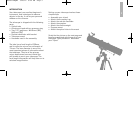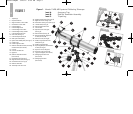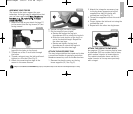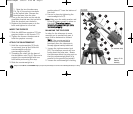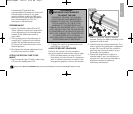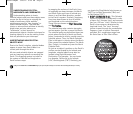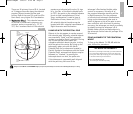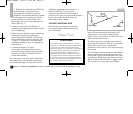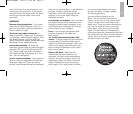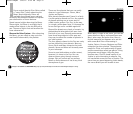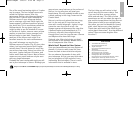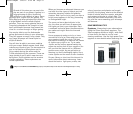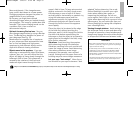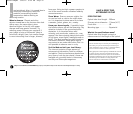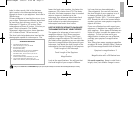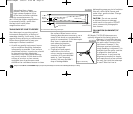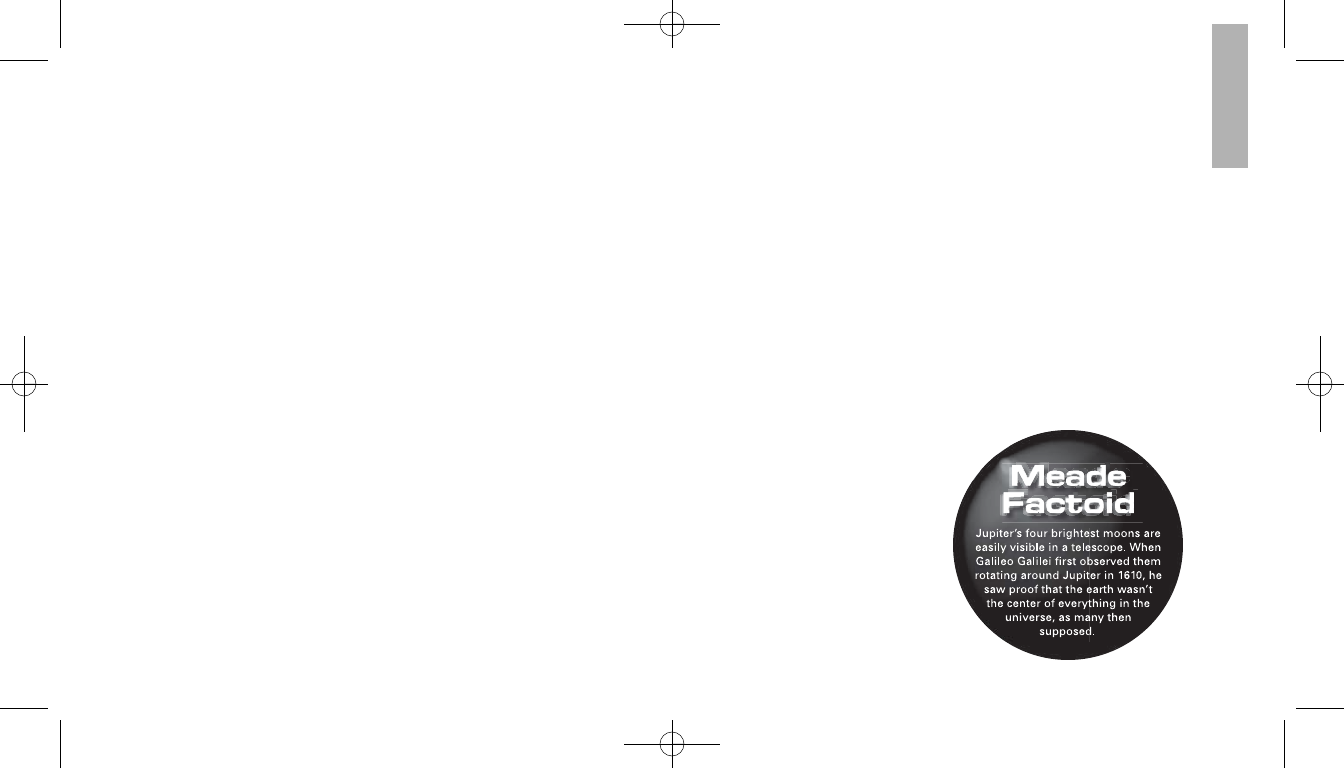
who is one of the first astronomers to use
a telescope, discovered four of the moons
of Jupiter with a telescope about the same
size as yours (and his didn’t even focus
very well!).
OBSERVING
Observe during the daytime: Try out your
telescope during the daytime at first. It is
easier to learn how it operates and how to
observe when it is light.
Pick out an easy object to observe: A
distant mountain, a large tree, a lighthouse
or skyscraper make excellent targets. Point
the optical tube so it lines up with your
object. Objects will appear upside down and
backwards in this model telescope.
Unlock the lock knobs: To move the
telescope, you will need to unlock the Right
Ascension (22, Fig. 5) and Declination (23,
Fig. 5) lock knobs (just rotate to unlock or
lock; when locking, only tighten to a “firm
feel,” do not overtighten).
Use the red dot viewfinder: If you have not
done so, align the viewfinder (24) with the
telescope’s eyepiece (19) as described
earlier. Look through the red dot viewfinder
until you can see the object. It will be easier
to locate an object using the red dot
viewfinder rather than locating with the
eyepiece. Line up the object using the
viewfinders red dot.
Look through the eyepiece: Once you have
the object lined up in the viewfinder, look
through the optical tube’s eyepiece. If you
have aligned your viewfinder, you will you
see the object in your eyepiece.
Focus: Look through the eyepiece and
practice focusing on the object you
have chosen.
Try out the slow-motion flexible cable
control: Practice using the right ascension
control cable (3) and declination control
cable (4) to move the telescope. These can
come in very handy, especially when you
wish to move the telescope in very small
(fine control) steps.
Observe the Moon: When you feel
comfortable with the viewfinder, the
eyepieces, the locks and the adjustment
controls, you will be ready to try out the
telescope at night. The Moon is the best
object to observe the first time you go
out at night. Pick a night when the Moon
is a crescent. No shadows are seen
during a full Moon, making it appear
flat and uninteresting.
Look for different features on the
Moon. The most obvious features are
craters. In fact you can see craters within
craters. Some craters have bright lines
about them. These are called rays and are
the result of material thrown out of the
crater when it was struck by a colliding
object. The dark areas on the Moon are
called maria and are composed of lava from
the period when the Moon still had volcanic
activity. You can also see mountain ranges
and fault lines on the Moon.
9
Meade114EQAR 3/28/07 9:52 AM Page 11



